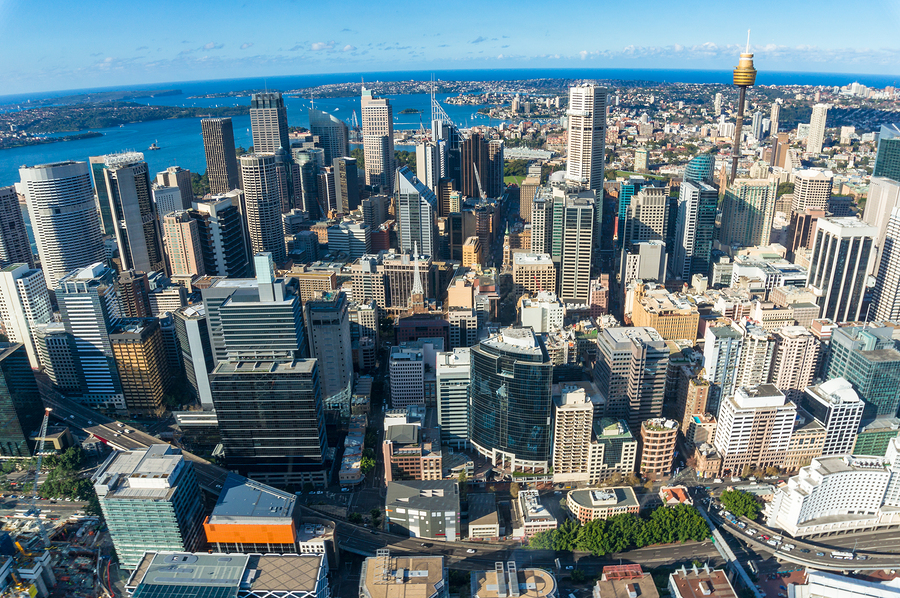In the current geopolitical climate, you’d be forgiven for thinking that Australia’s economy was braced for uncertain times.
After all, domestic debt levels have increased incrementally in recent times, while the nation’s close economic ties with China have come under scrutiny following Donald Trump’s attempts to initiate a trade war.
Despite this, economists remain upbeat about Australia’s short-term economic future, suggesting that the nation’s $1.8 trillion GDP will grow by a total of 2.9% in 2018.
This would represent a sharp increase on last years’ rate of 2.3%, while it’s also higher than was initially projected at the end of 2017.
This sense of growth and optimism is reflected by the buoyancy of Australia’s property market, which now employs more than one million people nationwide. We’ll address in the post below, while asking whether property market growth levels can be sustained and what this means for investors.
The growth of Australian real estate and its key challenges
Despite Australia’s history as a commodity-driven economy, cosmopolitan cites such as Sydney and Melbourne have always measured their success by the number of cranes that dot the skyline. This is true of most major cities, of course, and by this metric both Sydney and Melbourne are reaping the obvious benefits of a multi-billion dollar infrastructure boom.
After all, these prominent economic hubs are home to a huge number of residential and commercial building projects at present, each of which is creating a wealth of job opportunities and raising the level of sentiment among investors.
However, recent reports have suggested that pronounced property market growth in Sydney and Melbourne (and to a lesser extent Brisbane) could be counter-intuitive for the national economy. The biggest concern revolves around the cost of building in Australia, while the prolific rate of construction is also placing a considerable strain on the nation’s skilled workforce
In terms of the former, Sydney, Melbourne and Brisbane are among the most expensive cities in the world to build in, placing 19th, 21st and 22nd in the global rankings. This is largely caused by Australia’s isolated and remote location, which increases the logistical cost of importing materials and the associated tax levies.
As a result of this, many of these construction projects are not delivering the requisite level of profit, while the market continues to under-deliver in terms of competitiveness on the global stage.
Similarly, Australia only boasts a relatively small population of skilled workers. This is workforce is becoming increasingly stretched as the rate of construction increases, even allowing for any additional resources that are invested into training new employees and developing new skills.
This will only trigger a hike in labour costs and overall building expenses, while causing the rate of construction to slow appreciably over time.
Investing in property Down Under – Is this a viable investment option?

Not only are these real-time challenges impacting on the profitability of Australia’s burgeoning construction sector, but it is also creating a scenario where long-term growth is entirely unsustainable.
This is why economists are so concerned about the prospects for the wider economy, particularly if the market suddenly collapses and swallows more than one million jobs in the process.
While this is enough to create significant economic uncertainly in Australia and place an immediate drag on GDP growth, the question that remains is whether real estate remains a viable investment opportunity?
In truth, the recent forecasts are enough to send risk-averse investors running for the hills, especially given the declining profitability of projects and the potential delays that may be caused by a skills shortage.
Those with an international portfolio may also be tempted to invest their capital elsewhere, with more central locations such as Berlin having showcased property price growth of 20.5% in the year ending December 2017.
For those who do decide to invest in Australian property, it’s important to select potential projects wisely and seek out professional advice where possible. Firms such as DWF Australia provide a wealth of property market and construction advise to both developers and investors alike, helping individuals to highlight the projects with the best profit potential.
It may also be worth considering regions outside of Australia’s main commercial cities, including locations such as Canberra. Not only regional property values have increased by around 3.2% in the year ending December 2017, the cost of construction is lower here and this can contribute to higher profit margins.
This could provide an important compromise for investors, particularly those who want to capitalise on Australia’s property market while they can.

